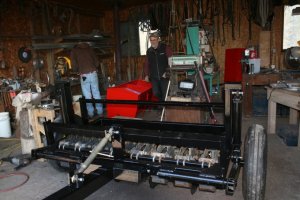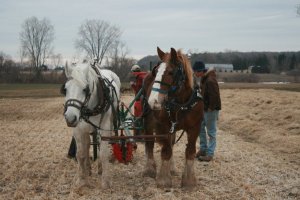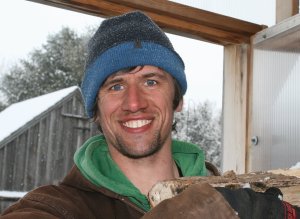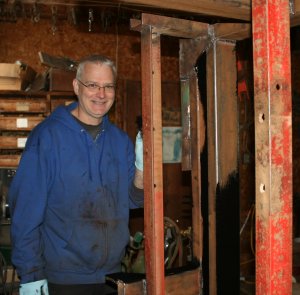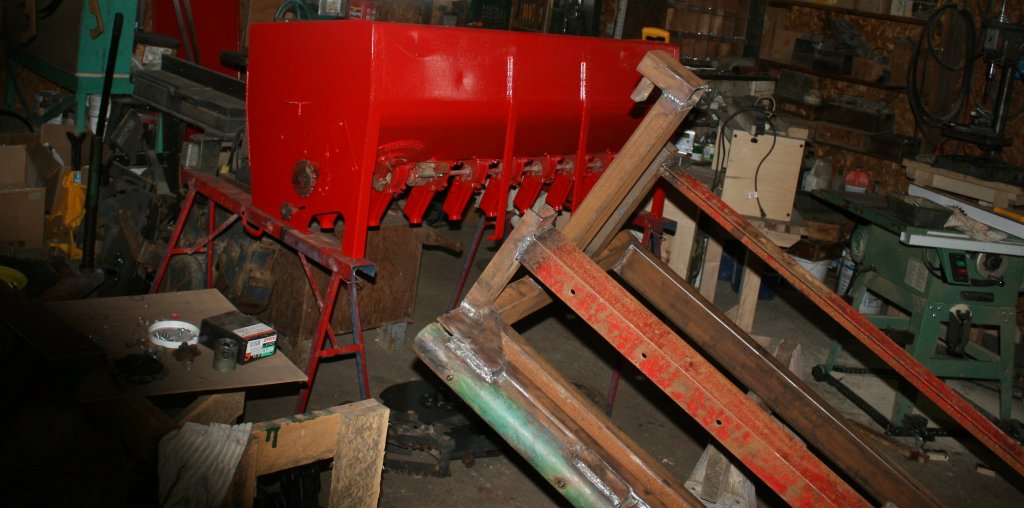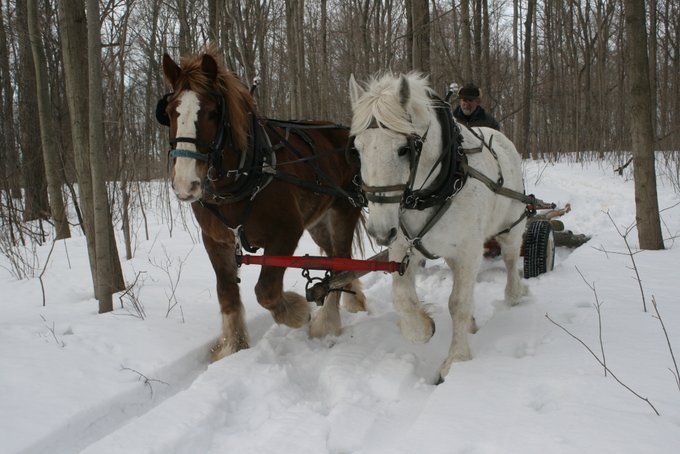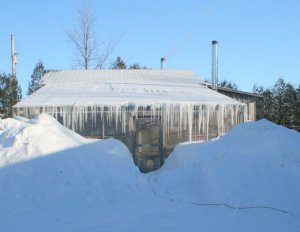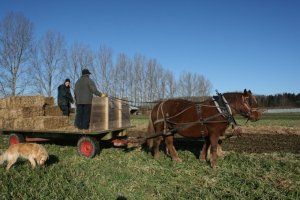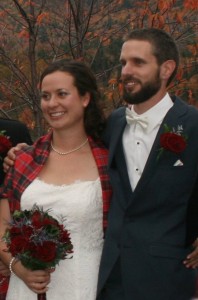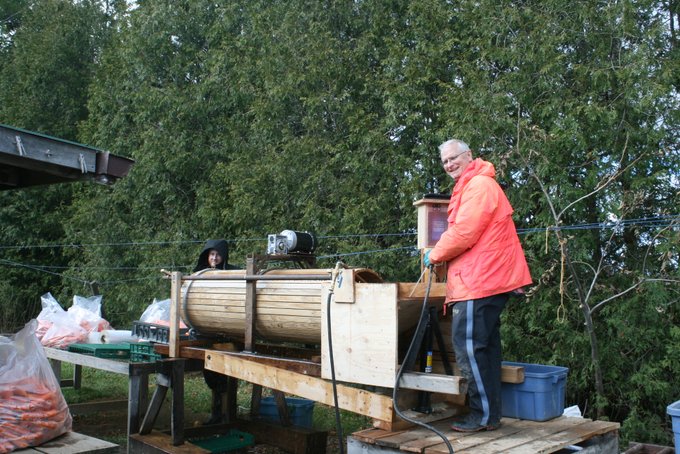

Our spring planting has begun. We managed to erect all of our hoop houses and have them planted with lettuce, pac choi and greens for the first pick-ups of the season to go along with our asparagus and rhubarb. We also planted our first seeds outside in the worked up area of the garden and in the zone-till section. We then covered it all with row cover (a spun polyester sheet that lets in the light and water while keeping the seed bed warm to help get the early seedlings started). If the zone-till rows grow well we could move towards more of a no-till planting in the CSA garden in the future.


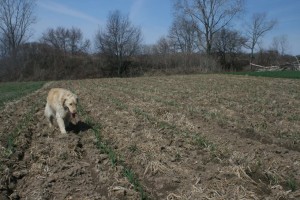
We have also been directing our attention to our perennial crops. Keeping weeds under control in the organic production of perennial crops without the use of herbicide requires special attention. The rhubarb is just starting to peek up out of the soil. We will weed it and then mulch it heavily with hay. This year we also planted a new rhubarb patch for future years. We are expecting to harvest from our new asparagus planting for the first time this spring. The asparagus has been disced over before the asparagus starts to grow and then we will hill and weed as the season progresses. At the end of the harvest season, we will plant a winter kill cover crop to keep the ground covered and the weeds at bay. Our strawberries were mulched with straw to protect them over the winter. The straw then helps with weed control and also keeps the berries clean from dirt splash at the same time it provides a nice cushion to kneel on when picking the berries. Our garlic that was planted last fall into an oat/barley/pea cover crop is starting to emerge. The cover crop was killed over the winter and Ken cultivated with the draft horses just beside the garlic to keep the weeds from growing. Naomi also cultivated beside the raspberry plants to narrow up the rows and control the perennial weeds. We will weed and then mulch in the rows with wood chips. Later in the season we will plant a winter kill cover between the rows that we can mow until the fall. Our garden beside the house has gone through some renovation too. We have moved around some of the perennial herbs and flowers to make room for the annual CSA flower cutting garden.

Our CSA garden from 2014 is being ploughed with the draft horses and then it will be planted to cover crops. It will have a year off as we prepare the soil for the 2016 CSA garden. Ken spread some heavy mulch on part of the garden area to add organic matter to the soil. It provided quite a challenge to our new teamsters as they ploughed over the bumps and clumps of mulch!
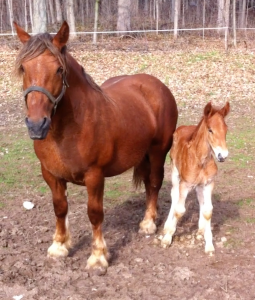
Flynn is growing well and enjoyed being outside for a good romp around the pasture. The first time he went out he did a high stepping prance around the field like a fancy show horse and then jumped around like a little lamb. It is such fun to have a foal around again this spring!

Our greenhouse plants are growing well and we have to keep on mixing up potting soil as we use up batch after batch with our plantings. Our field peppers, tomatoes and eggplant germinated well and are now potted up into 50 cell trays ready to grow on until they can be transplanted after the danger of frost has past. The onions and leeks are off to a good start and had to be moved out to a hoop house to make room for other plants in the warm greenhouse. It is always nice to work in the greenhouse on cold, wet days in the early spring.

The wood fired oven is progressing well. Seth, with the help of Jim, has been working away with special heat tolerant cement, insulation and fire brick to build the oven. It is quite the project. We decided to build the oven in our old round steel granary. The granary is too big for our current grain storage needs, but makes a nice room for the wood fired stove to keep it out of the weather.

We have Alina Kronmüller, a Waldorf high school student from Germany, visiting until the middle of June. She has been a good sport joining in with various activities, including looking after the laying hens. It is quite a change for her, but hopefully a good experience over all.
 Grayden has been busy painting pictures of produce from the farm and hopes to have pictures and cards for sale once our CSA Season begins.
Grayden has been busy painting pictures of produce from the farm and hopes to have pictures and cards for sale once our CSA Season begins.

